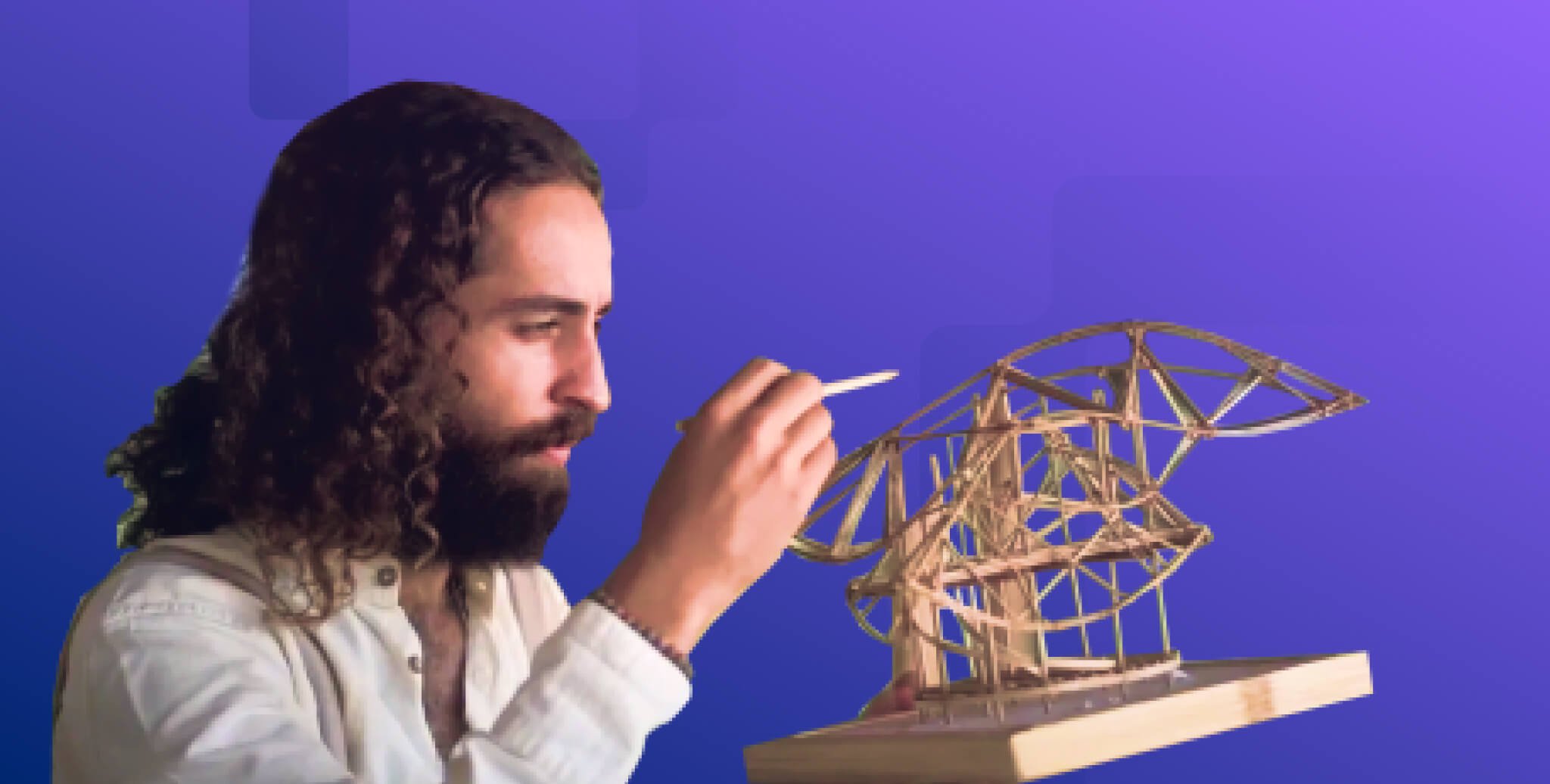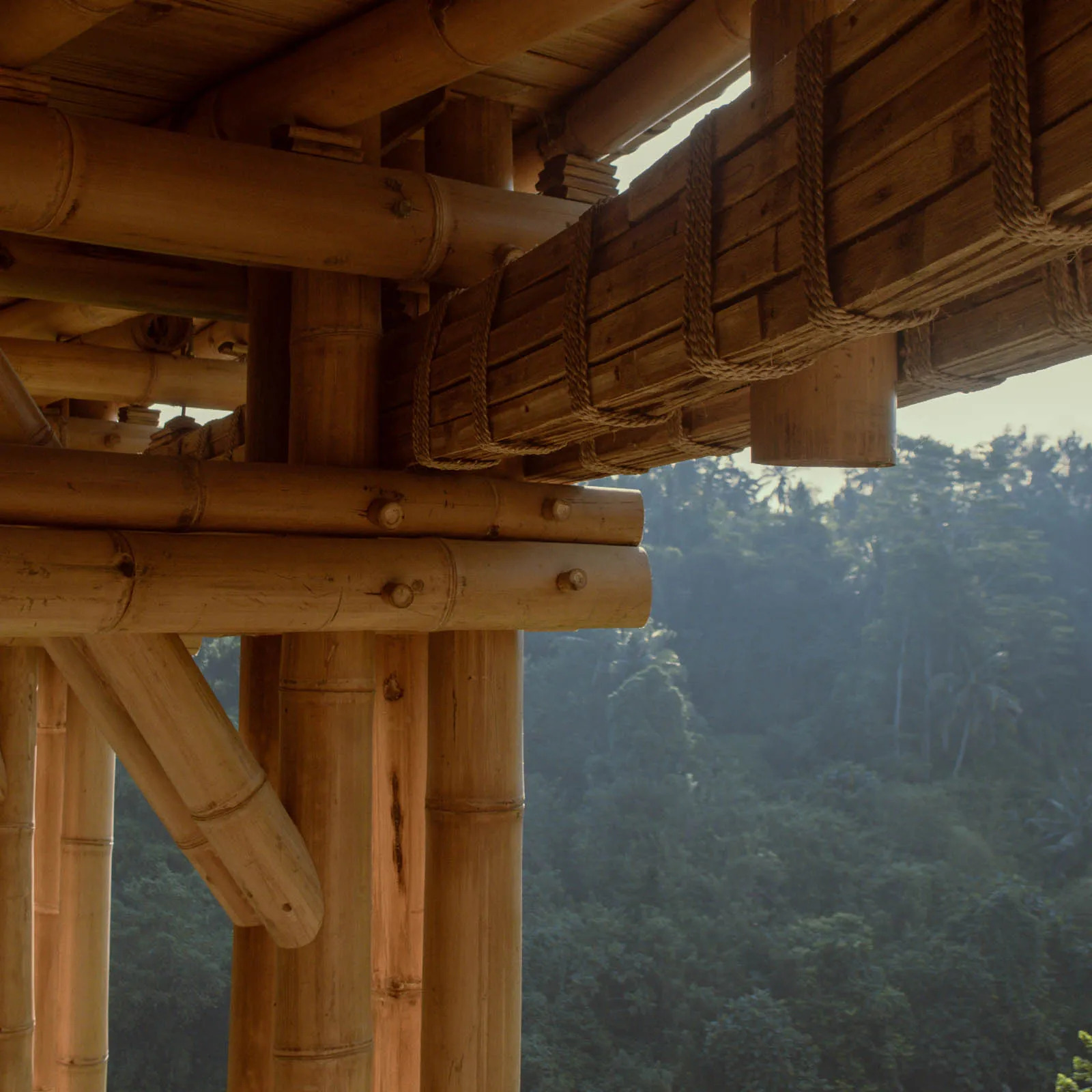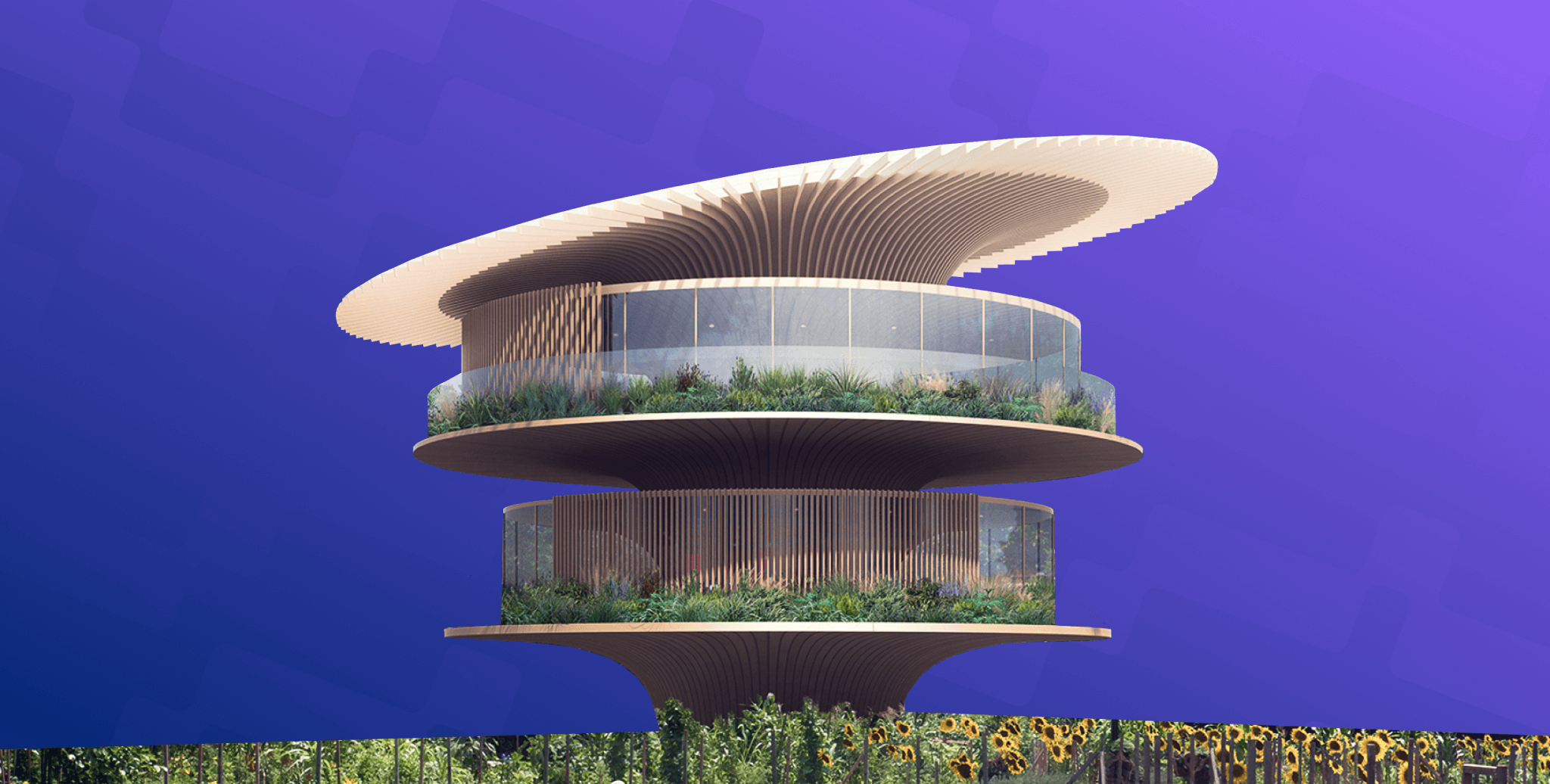Entrepreneurship + Finding Your Niche in Architecture | Interview with Pablo Luna

Table of Contents
1. How did you decide to pursue a career in architecture?
It all began ten years ago, when I was back at Columbia University in New York.
I was trying out different careers after I pursued business for two and a half years in Chile. I realised that business was not really my passion that I really wanted to develop at that time. So I moved to New York and started trying different classes of neuroscience, art, and in between those, I took one on architecture.
I still remember the class was called ‘Abstraction’. It was a studio, and I fell in love with making the models, the process, having to take in consideration the space, the land, the culture, and at the same time creating something physical.
I feel like the physicality of architecture, of creating something in the world that I can see, touch, and feel, made me fall in love with this career. And that's why, ultimately, I decided to put my soul into it and finish university.

2. You have a very dynamic resume of works ranging from architecture to jewellery to art. Could you give us a synopsis of your professional career up until this point?
Even though I studied architecture, I thought I was going to dedicate my life to sculpture. I was really interested in organic shapes and how education through art can really change anybody's life. So back then, I was really doing sculpture. I was also showcasing my work in New York and Chile.
Then, an opportunity showed up to come to Bali. I met John Hardy in New York, who was in search of an architect who could help finish the construction of his hotel called Bamboo in Bali. And I really jumped into the opportunity. I thought it was the perfect mix to work with bamboo architecture and natural materials. I also thought it was the closest to sculpture that architecture can get.
That was my first big step and I decided to really continue my studies and profession, and support John and learn from him. I worked for a year and a half with him and built my first few buildings and designs with him. After a year and a half from that, seven years from now, I decided to start my own studio.
I thought I had the basic skills (not the necessary, but the basic) to begin. So I started alone and it was a big journey to learn how to find clients. At this stage, my business background of two years, as I told you before, also helped a little bit to know how to make the numbers, how to create the legal documents, etc.
And in between this journey, I started teaching some classes about bamboo architecture. While teaching one of the innovation classes, I got inspired to make jewellery. So, I started doing a few pieces of jewellery with bamboo, reclaimed silver, and gold. Slowly through the years, it ended up being like a second business of mine which is called Pablo Luna Jewellery.

My architecture studio is at the top of the building that I'm in now and at the bottom is our jewellery studio, which is very exciting. I call everything that we’re doing here - “Architecture for the body”.
There was no big plan. I've been following, learning, trying to apply everything that I learned at that time and now. And that's been the key because all these experiences have allowed me to see what is the culture, what is the vision that I have, how I want to contribute to the world, to my team, etc.
After I stopped working with John, I did buildings which were called Tree House and Farm House that I did with another beautiful designer who gave me the opportunity to work on his property. His name is Walter Sabrisky.
In those early projects, I did the architectural designs and the construction. It's really in construction where architects learn the most. We can put a lot of things on paper, but it's construction where we get the big pitch-ins. So, after building those two buildings, I continued the journey and brought more people into the team, etc.
To know more about Parametricism and Biomimicry, check out: How is Parametric Architecture Used in Biomimicry?
3. Circling back to this whole experience about the business background that you have and the first hand experience that you had with these buildings, what was the thing that inspired you to start your architecture entrepreneurship?
There were a few elements. One was that I really wanted to find my voice ever since I was very young - this art talent that I told you about. I really wanted to see what I have to contribute. It was like a personal challenge.
The other is John Hardy, whom I spoke of earlier. He really inspired me to do this. He would always tell me how everybody has to find their way, contribute, challenge themselves. The biggest challenge was to try and be out there, see that I could stand by myself in the world, but at the same time, very humbly. It was like a personal challenge, understanding that I'm just a human being and I want to contribute the best way I can. That was really the big motivation to see that I could do this. It was like a personal challenge.
Then, of course, I had a language of architecture that I felt deeply, a language of expression that does not emerge when you are working for somebody. And to tell you the truth, it's been the most rewarding experience, because being an architecture entrepreneur, you realise that there are so many points involved. The way your team interacts and works is a representation of who you are. You learn to work with people a lot, take responsibility for everything you do and everything your team does. It's something that I truly suggest for everybody at some point to try out and to not be scared of failure. I have had quite a few moments of failure already in my career - thinking that this is almost unbearable.
But you gain so much strength, so much confidence, and so many lessons. So, yeah, it's been a beautiful decision.
I don't think it's for everybody. I don't want to say everybody has to be an entrepreneur. It's a calling. It also depends on your sensitivity. You have to be really honest with yourself. And I think it has to be very pure. You really need to have something that you want to say and find the people that fall in love with that vision to contribute. Because doing it alone is impossible. It's teamwork, it's collaboration that brings the magic and all the designs.
Everything that we're doing at our studio is my team. It's beautiful what they are creating. I'm constantly inspired by them.
4. Now that you've been on both sides, both as an employee with another firm and as an architecture entrepreneur, do you think that architects should start their own firms as soon as they graduate? Or should they get some work experience beforehand and then jump on their own?
I strongly believe you should get some work experience at the beginning. Learn, get mentors, get people who teach you the way, who show you their mistakes.
Architecture and construction is a long term career. It's about ageing. There is so much to learn, so much to discover. It's endless. Don't rush. Learn from the people that are already doing it. Gain all the experience. See how they relate with others, how they put their projects together, what kind of organisation is needed.
For me, having John at the beginning was a great inspiration. Also, the biggest inspiration was seeing somebody that I already knew working harder every day and putting everything he had to.
So take the time, get inspired. If I didn't have these people in my life, I don't think I would be where I am today. They really motivate me on a sole level to do what I do.

5. Now that you have your own firm and you have begun your own practice, can you recall how you landed your first project?
Yes, I perfectly recall. My first project was very challenging because even though I already built some buildings under the umbrella with John, and I had designed and built them, they were still projects that belonged to all the machinery that John had set up.
My first client was Walker Sabriski. He's a longtime friend now, after many years of working together. He gave me six months to do all kinds of small things to get the first building built on his property. I would help him fix the door in the entrance of the hotel, work on the landscape, prepare presentations, and then really take from scratch all the design processes. He challenged me for six months, in a very beautiful way and gave me the opportunity to build the Tree House (mentioned earlier) on his property.
After I did that, my self confidence grew a lot. I realised that I can go through the challenges of construction and design, and end up with a beautiful result. It was not easy.
I think as an architect, you need to have a portfolio to be able to get serious clients. So, I got blessed in that way. My recommendation for young architects is to find a person that will give you the opportunity to build and try to convince him. I have done it millions of times to create my project. I go to the client, show him the idea, and actually, our latest building in Chile resulted from that.
As an architect, you cannot just wait for projects to come your way, you create your projects.
6. In the business of architecture, do you think it is better to be a generalist or a specialist?
I strongly believe you need to be both. You need to be able to look at things with perspective. You need to be able to see what is going to come in the future. What are the trends? What are the ideas? What are the materials? What are the new ways of leading a team? How do you relate with your team? How do you create a system that inspires creativity - that is meaningful, that everybody feels challenged and committed to?
So, you always need to be very open and generous. You need to know about finances, legalities, design, construction, human resources, and you need to be open to learning.
I took marketing classes. We learned about how to put content on LinkedIn, Instagram, etc. So, I am involved in every part of the business, and I found it so much fun.
My tendency is to be more of a generalist. Going into in-depth details is hard for me, but I do it. I challenge my team in order to challenge myself. So, you need to know how to balance both and find the right people to support you in the areas where it's not your strongest one. Of course, at the beginning, if you're starting your studio, you need to find a way to do it all. And that's part of the journey. But slowly you can bring the people to create a cohesive team.

7. Could you list the things that you think are crucial for people to know about owning a business?
The number one essential part is to know that you're going to have to put your soul into it and be very disciplined. You're going to have to work late and on the weekends, learn about areas that you don't know, and loads more. It's going to be fun, but at the same time challenging.
For me, the most important thing will be to find your values and mission for the company. What is the culture? What is that you're bringing to the world? I constantly find inspiration. I read a lot of books. I always get inspired by our ancestors and the people that today are leading big or small companies with the heart and living a balanced life.
Then, of course, try to divide your time accordingly. You need to take time for the creation of new projects, learn about how to market your architecture firm, etc.
Next, as we grow, we change. Sometimes you start with something and you end up with something that is different. I would say, don't be scared of change.
The final recommendation is to be completely honest and responsible. Be honest with yourself, take criticism, and create a spirit of growth and excellence. If you want to lead a team, you have to be an example.
If you are an employee, which I believe most of us humans have been at some point and will be, you decide to go and work for the leader for different reasons. I always tell my team, you're not here because you made a deal with me or signed a contract. It's because you decided to come here and be the best version of yourself. So even if you don't start your business, be the person that you're inspired to be.
When you put all your effort and soul into something, everything comes back. You can call it karma, you can call it anything. You're going to have challenges but if you try your best then you’re going to feel great.
The people that I admire the most are the disciplined ones.
Don't do it for approval. Don't do it for ego or trying to prove something to somebody. Do it for yourself, because it's beautiful. You are not only aligning the business, but you're aligned with yourself and who you are. You have the courage. I think courage is the key part, especially for young architects, because the best architects are the ones that have the most experience, at least to my eye. And I'm very young, and there are many things that I don't know, many things that when I look back, I could do better. But you also need to jump. So, have the courage to jump.
Go for it. Do it. Learn. Take responsibility.
I believe that if you're putting your best, people get inspired. It's more about human relationships sometimes, right? Energy. It's a lot about energy.
8. How are you able to connect with people that can help you in your career?
What I did was to expose myself to events that I like. To ask people, I would love to do this for you, what do you feel we could create together?
At the same time, my spirit is that I never do anything from a place of need. I only do things that I want. Come from a place of the abundance that you want to create. It's been very organic for me.
You need to get out there, work on everything you do, take good pictures, document, share your values. I have a lot of group conversations at these events. For example, I have a book club and I got a client from my book club: something I never expected.
That's magnetism. When you're fully invested, people are curious and that curiosity spreads around.
9. How do you make sure to stay relevant in the game?
I'm always learning and seeing what others are doing that I like. This fascinates me. Yesterday, I was reviewing the Norman Foster website. I learned about something that they're doing that's called “Retrofit”. I see whether that resonates with what I want to do. I'm always learning in all fields. That's the first one.
Secondly, you have to improve the systems every day a little bit. Ask questions - How can we make the marketing plan a little bit better? How can we do the organisation of the team? How can we improve on the small things?
10. What advice would you give to young architects who might be lost about what they want to do after graduating?
Go work. I have hired people that did not have the best portfolio in comparison to others, but had the best attitude. So, one is having the right attitude.
Second, of course, prepare your best portfolio.
Third, see what skills are needed and relevant. Challenge yourself and learn the basics of these skills. When a young architect comes to my studio, I don't need just an architect. I need somebody that can lead with clients, improve my contract, invent new ways, and see the future.
Work one or two times, take a couple of years, take the lessons, get the mentors, and move from there.
So that’s it! I hope this blog gave you the insight you needed to understand the architectural design process and accelerate your career in the Architecture, Engineering, and Construction (AEC) Industry.
Novatr offers courses on the most in-demand skills in the AEC industry. Our Master Computational Design Course for Real World Application is taught by globally renowned industry experts with years of real-world experience working in the industry.
Go to our Resources page for more insights on AEC careers, software & tools, and industry trends.

 Thanks for connecting!
Thanks for connecting!


.png)
.png)


.jpg)


